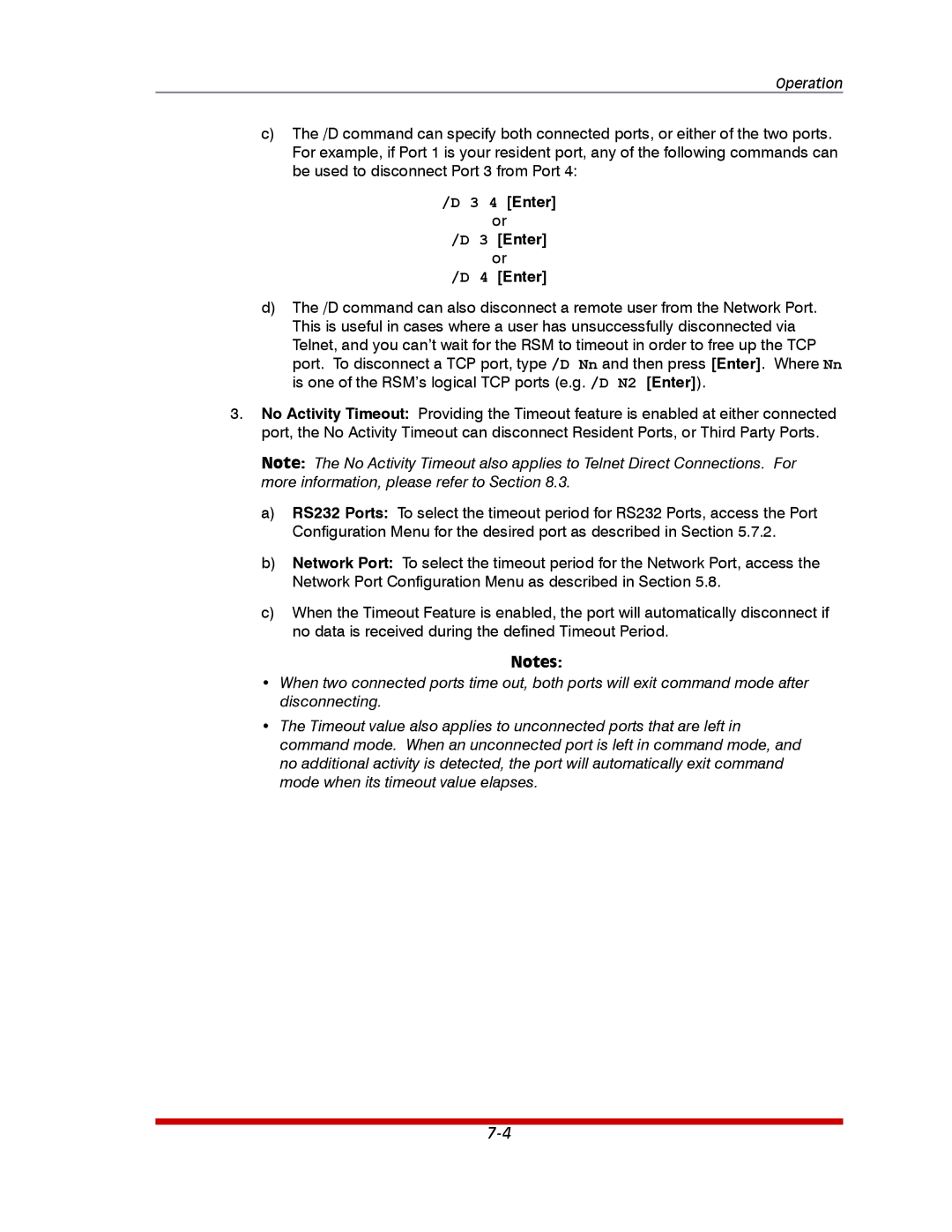
Operation
c)The /D command can specify both connected ports, or either of the two ports. For example, if Port 1 is your resident port, any of the following commands can be used to disconnect Port 3 from Port 4:
/D 3 4 [Enter]
or
/D 3 [Enter]
or
/D 4 [Enter]
d)The /D command can also disconnect a remote user from the Network Port. This is useful in cases where a user has unsuccessfully disconnected via
Telnet, and you can’t wait for the RSM to timeout in order to free up the TCP port. To disconnect a TCP port, type /D Nn and then press [Enter]. Where Nn is one of the RSM’s logical TCP ports (e.g. /D N2 [Enter]).
3.No Activity Timeout: Providing the Timeout feature is enabled at either connected port, the No Activity Timeout can disconnect Resident Ports, or Third Party Ports.
Note: The No Activity Timeout also applies to Telnet Direct Connections. For more information, please refer to Section 8.3.
a)RS232 Ports: To select the timeout period for RS232 Ports, access the Port Configuration Menu for the desired port as described in Section 5.7.2.
b)Network Port: To select the timeout period for the Network Port, access the Network Port Configuration Menu as described in Section 5.8.
c)When the Timeout Feature is enabled, the port will automatically disconnect if no data is received during the defined Timeout Period.
Notes:
•When two connected ports time out, both ports will exit command mode after disconnecting.
•The Timeout value also applies to unconnected ports that are left in command mode. When an unconnected port is left in command mode, and no additional activity is detected, the port will automatically exit command mode when its timeout value elapses.
